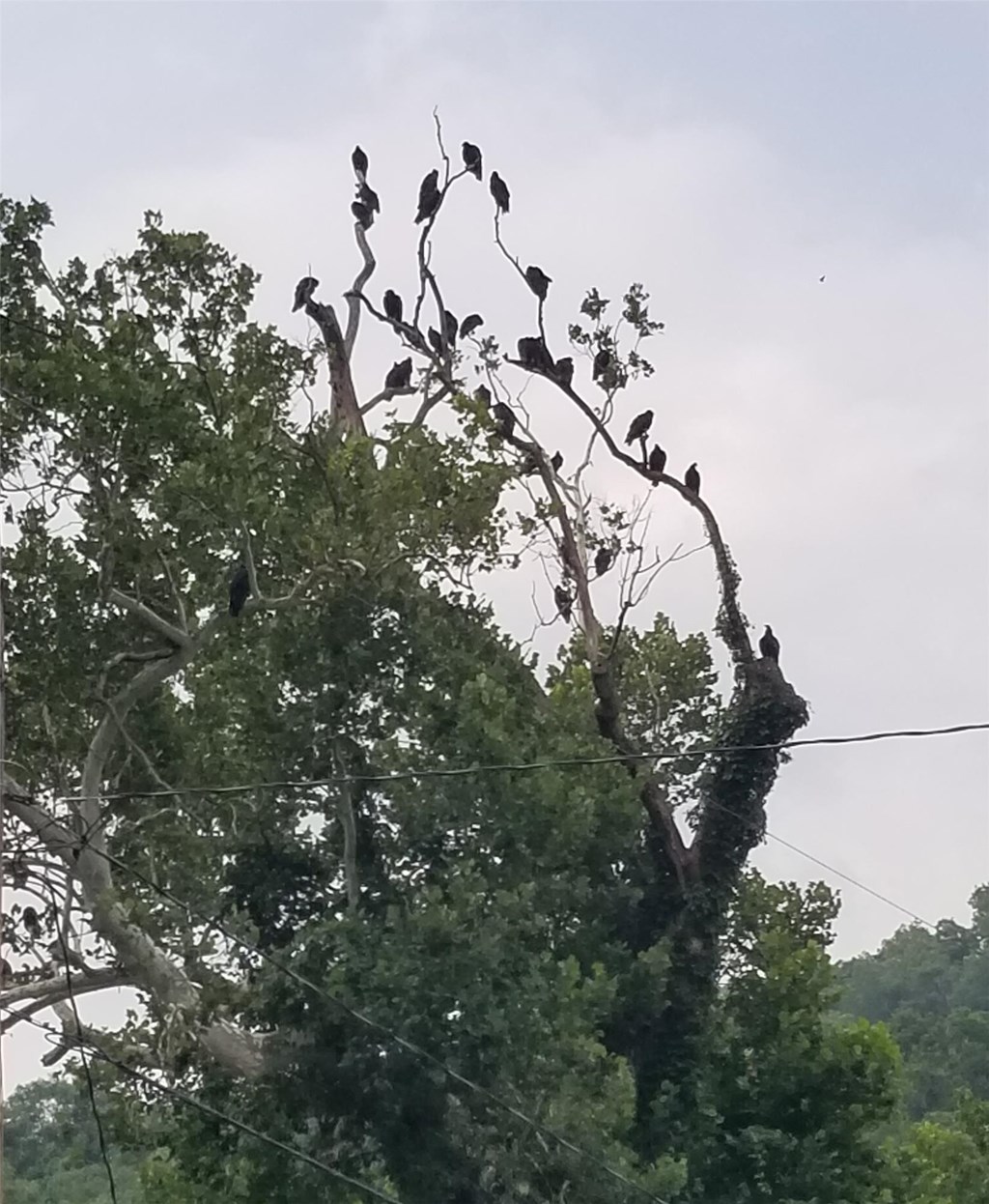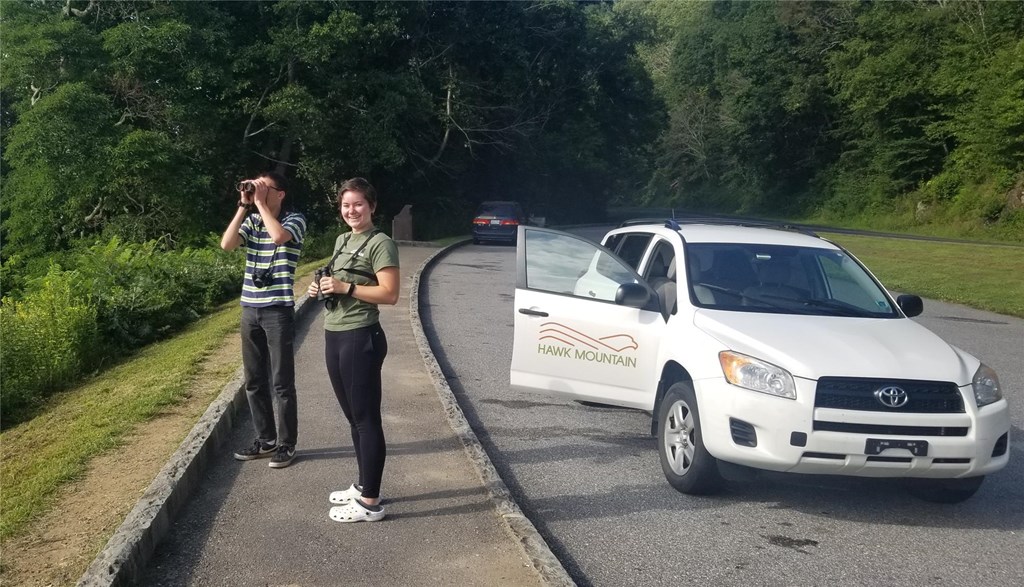Meeting with the Vulture Committees
Posted on in In the Field by Bracken Brown, HMS Biologist-Naturalist

Wake, kettle, committee… while an accurate summation of most researchers’ conference mornings, these terms define groups of vultures in various states of activity. As we monitor negative population trends from many species of raptors as well as outright population collapse in the old-world vultures, the success of our two most common new world vulture species is often underappreciated. Many people are fortunate enough to experience vultures circling overhead; however, catharsis tends to shift to putrescence as the kettle settles in to roost and people realize the overlap between vulture and human real-estate choices. This perceived nuisance is leading to growing conflict between people and vultures who are utilizing the same landscapes, and this conflict unfortunately pushes towards mitigation that doesn’t address the attractants that are bringing vultures in.
Vultures, for a common species, have been long overlooked as a study species, and as a result, little is known about their regional population trends and specifically if birds using one roost site are likely to disperse and, if they do, where they end up. Transmitters and wing-tags are great tools to track an individual, and over time enough tagged individuals can lead to informed generalizations for how regional populations utilize their range. However, funding limitations can impact tracking results, depending on how many birds we can manage to outfit with unique markers. This is especially true in vultures, which can range from obligate migrants, to partial migrants, and even non-migratory populations depending on their location.

To counter this, Hawk Mountain Sanctuary initiated road surveys targeting scavengers in 2005. These surveys consist of routes throughout a target region, which are driven during fair weather after the vultures are expected to leave the roost and therefore be detectable from the vehicle. These routes target the non-migratory summer and wintering areas when most vultures are expected to be within the same vicinity. These surveys are repeated every 10 years and generate a rough estimate of population trends and changes from across the range, capturing important vulture areas, migratory vs. non-migratory population movements, and a baseline for population density throughout the species range. To date we have revisited 16 of our 20 survey areas and catalogued 79,223 km of survey routes, relying heavily on a collaborative effort of former and current trainees, regional researchers, and Sanctuary staff to pull off this effort. The growing database supports the growing population estimates, especially along the eastern seaboard as well as along the northern extent of their range. We will refrain from sharing the data until it is all collected and compared, but to date these surveys are proving an accurate method for monitoring regional populations.
While any road-related driving survey collects its share of foibles due to inclement weather, flat tires, and impatient traffic that doesn’t share an appreciation for survey speed, it has obtained a growing network of vulture-aware collaborators and has served as an invaluable training tool for approaching population wide studies that will continue to benefit those who have participated. In the next few years every site will have been revisited, and once the data is pooled, another tool will be in our arsenal for understanding the complexities of our most common scavengers and monitoring how they utilize the landscape.
One thing is already apparent: similar to information sharing at the vulture roost and across the landscape, we are continuing to grow our own scavenger enthusiasts with Hawk Mountain as the home roost, who will continue to expand our study area and help us monitor this fascinating, curious, ecological clean up crew. Next time you get to encounter a committee or even a wake of vultures, take a pour out of your kettle and enjoy watching how they engage with the environment and why they chose to spend time in your neck of the woods (hint: it’s not that they are delivering a message of an imminent death in the family).